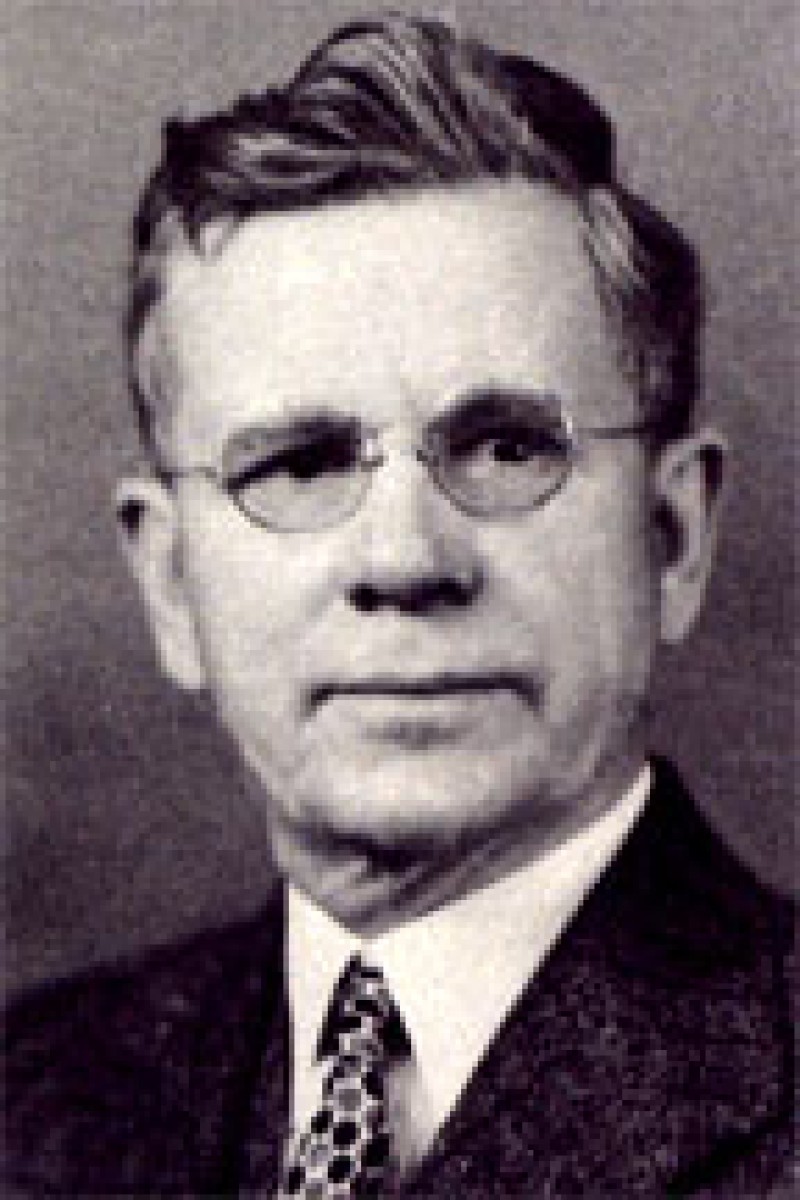Edward Crawford Turner
Edward Crawford Turner believed in the American ideals that political leaders should serve society even at the sacrifice of their personal gain and that government should protect its citizens from unscrupulous people.
Turner was born March 26, 1872 to Robert M. and Jane Crawford Turner in Columbus, Ohio. He graduated from Ohio State University with a law degree in 1901. He was admitted to the Ohio bar that year and began to practice law in Columbus. In 1903, he received a master of laws degree from Ohio State.
In 1910, Turner was elected Franklin County prosecuting attorney. Within months of assuming office in January 1911, several members of the Ohio General Assembly were accused of accepting bribes. Turner and Ohio Attorney General Timothy Hogan conducted an investigation resulting in the indictment of five legislators, four of whom went to prison.
Turner gained a reputation for fighting corruption in state government. In 1912, he was re-elected and, during this term, he prosecuted several officeholders who collected “contributions” from civil service employees, a practice in direct violation of the law. An anonymous letter to the editor in The Ohio State Journal of March 4, 1913 praised Turner’s actions:
“In Turner and Hogan we have two of the best officers that Ohio ever had. There is no loafing on the job with them, with their feet propped up on the desk, while corruption is running loose outside their doors. No, they are up and doing, and already corruption is shaking its shoes.”
Turner was elected Attorney General of Ohio in 1914, but was defeated for re-election in 1916. His successor, Attorney General Joseph McGhee, asked Turner to take charge of further proceedings related to the U.S. Supreme Court decision on the “blue sky” case. After completing this work, Turner returned to private law practice in Columbus.
In 1926, Turner was elected Attorney General again. Turner entered a three-candidate primary race for the Republican nomination for Governor in 1928 and lost to Myers Y. Cooper, who won the gubernatorial election.
On May 24, 1939, Gov. John W. Bricker appointed Turner to the Franklin County Court of Common Pleas to fill the unexpired term of the late Judge Harold L. Kime. Turner was defeated in the 1940 Republican primary by Joseph M. Clifford. Gov. Bricker then appointed Judge Turner to the Supreme Court of Ohio on Oct. 3, 1940, to fill the unexpired term of the late Justice George S. Myers. On Nov. 4, 1940, he was elected to serve the two remaining years of Justice Myers’ term. Turner was later re-elected to full six-year terms in 1942 and 1948.
One of the heavily cited cases of Turner’s Supreme Court tenure is State of Ohio v. Nevius (1947).
In Nevius, the Supreme Court addressed the issues of whether a person could be tried for a crime in a county court when the crime was not committed in that county, and whether circumstantial evidence was enough to convict for bribery. Jerome Nevius was the prosecuting attorney of Clark County and was convicted in Clark County Court of Common Pleas for accepting bribes from Joseph Parisi and Ralph Schear, who operated a gambling establishment in Clark County. Nevius was charged with two counts of accepting automobiles and one count of accepting large sums of money. Some evidence showed that Parisi gave Nevius one of the cars in Montgomery County.
The Supreme Court ruled that Nevius could not be tried for the charges of accepting the cars in Clark County, as the crime did not occur in Clark County. On the count that alleged that received large sums of money, no witnesses testified that they actually saw Parisi and Schear give Nevius money. Circumstantial evidence was introduced that Nevius visited the gambling establishment two to three times a month for more than a year and that Nevius also spent $12,000 more than his known income between 1941 and 1944. Justice Turner wrote regarding the use of circumstantial evidence, “Bribery is one of the crimes where it is frequently, if not usually, necessary to rely on circumstantial evidence.” The Supreme Court upheld Nevius’ conviction on that count.
Turner and Nan A. Jahn were married on Dec. 11, 1902. They had one son. Turner died on Sept. 13, 1950 after suffering a stroke. Justice Turner is buried in Greenlawn Cemetery in Columbus.
Chief Justice Carl V. Weygandt commented, “In the passing of Judge Turner, this court and the people of Ohio have lost a capable, conscientious, and hard-working judge. He will be greatly missed by those of us who have had the opportunity to work with him through the years.”

b. March 26, 1872
d. Sept. 13, 1950
105th Justice of the Supreme Court of Ohio
TERM
Oct 3, 1940
to Sep 13, 1950
